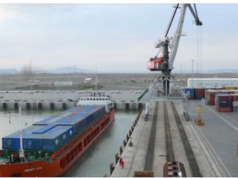Trend:
Latest statistics from Iran’s Customs Administration, which covers a period from March 20 to July 21, points to a fall in Iranian exports to those economies that acted as re-exporting intermediaries.
Iran’s exports to Turkey and the UAE fell by 65.5 and 15.6 percent in value, while the value of exports to India, Pakistan and China declined by 12, 12 and 3 percent.
It appears that with removal of restrictions under the nuclear deal that came into force last year, Iranian businesses are restructuring as well as redirecting their trade toward Europe and East Asia, especially toward Taiwan and the Republic of Korea, Mehrdad Emadi, a consultant at the UK-based Betamatrix International Consultancy, told Trend.
“This was an expected and positive effect of the JCPOA [Joint Comprehensive Plan of Action, aka nuclear deal]. Iran is moving toward exporting to those economies where expected earnings are more attractive. And as a result, Turkey and the UAE are less relied on as go-betweens to third markets,” the expert explained.
The picture for Iranian imports also confirms foreign firms’ greater interest in doing business.
“There are increases in Iranian imports from all the ten top countries. Britain with a 200 percent increase (be it from a very small base) is followed by Switzerland (81 percent), France (51 percent), the UAE (42 percent), Italy (26 percent), China (19 percent), Republic of Korea (15 percent) and Turkey (11 percent). All have exported more to Iran,” Emadi said.
“I suggest two reasons, though there may be other forces at work contributing toward the increased imports. Firstly, removal of sanctions following the JCPOA removed the cost of doing business with Iran,” he said, adding that lower shipping insurance, less perplexing financial restrictions and removal of the intermediaries have made it more attractive for the European firms to do business with Iran.
“Secondly, macroeconomic data on output and investment points also to a fall in the manufacturing activities and investment undertaken by private firms inside Iran,” he said.
“Falling output may have created more demand for imports. Without further research and a closer examination of data, it is difficult to arrive at a clear picture of the dynamics that has governed the trade account in the period of focus here,” Emadi explained.
He said the regional change in the direction and distribution of Iranian imports is mostly positive and congruent with the long term strategic interests of the economy.
Changes in the value of trade show that the EU’s trade with Iran has risen by more than 46 percent, while a rise of 74 percent in trade with the ASEAN also suggests a restructuring in the foreign trade away from the lower income trade partners of Iran, Emadi said, adding that this is a positive change if Iran wishes to export more manufactured goods with a higher value-added content.
“These markets are more attractive targets for such a policy.”
“A less encouraging observation is the small share of capital goods in Iranian imports which is only 16 percent as against 22 percent for consumer goods,” he underlined.
Intermediate goods constitute 60 percent of Iranian imports, which perhaps suggests the dependence of the manufacturing on import of such goods which include components for industry, Emadi said, noting that this is also a source of concern should it continue on the path.
© Content from this site must be hyperlinked when used






